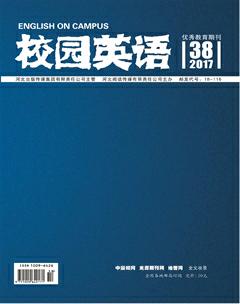Mediation in Sociocultural Theory
李艺
Sociocultural theory is the fundamental work of notable psychologist Lev Vygotsky, who believed that parents, peers, and the culture at large were responsible for developing higher order functions. Based on Vygotskys interpretation, mediation is one of the biggest constructs in terms of sociocultural theory. Mediation is the central concept of sociocultural theory. It is the auxiliary means that humans use to make connections with the social material world. Those auxiliary means are higher-level artifacts that serves a buffer to relate human and the world. Humans minds are mediated by producing, changing and using mediation during interaction with the world. The chart below illustrates how mediations functions and how mediation relates human and the world.
physical artifacts
Mediation symbolic artifacts
Human beings --------------------------------------------------- world
Mediated mind
There are two major tools of mediation, as shown above, they are physical tools and symbolic tools.
Physical tools are culturally constructed objects. They can be simply physical tools such as pen and paper, which help people to write down whatever they want to remember. Physical tools can also be complex projects such as computer, which human to deal with complicate problems such as mathematics and they van even help human to think smartly. Physical tools are auxiliary means that help people making connection with the world.
According to Lantolf and Thorne, human have higher mental ability to produce higher level tools to mediate with the world in a more deficient way. for instance, in order to plant a tree, we need to dig a hole on the ground. People can simply use the hands to dig the hole. However, people choose to mediate the digging process by using a shove since it is more efficient and energy-saving. Animal, on the other hand, such as dogs, can only use their feet to dig the hole. Human can even use digging machine as the mediational mean to dig the hole in a more efficient way. thus, Lantolf and Thorne state that physical tools can be used by human to change the way we live in the world and therefore change our lives into a better condition.
Besides physical artifacts, symbolic artifacts also play an important role in humans lives. symbolic artifacts include language, numbers, arts, music, mathematics, etc. similar to the function of physical artifacts, symbolic artifacts are also auxiliary means that people use to control and reorganize their activity in psychological level. For example, human use language to communicate and interact with individuals and the world. Language is used as a tool to think, to plan, and to have psychological activity. By using symbolic artifacts such as language and graphs, human process higher-mental function. For example, when spiders make a net, they naturally process it without any mental thinking activity. Human beings, on the other hand, according to Vygotsky, human have the ability to control their mental activity since we all have higher mental capacity. Therefore, human will make mental process to construct a building.
Along with physical tools, symbolic tools enable human to change their life in a better way. Wertsch brings up “spin off” function of mediation. Lantolf and Thorne consider that mediational means are historical. Culturally constructed objects and symbolic auxiliary means both pass through generation to generation through history. When human interact with social content, they not only are able to use mediational means to interact their relationship with the world, but also can adapt current objects into a more advanced way of usage. Based on repeated intense usage, human adapt their knowledge to improve current culturally constructed objects in a better condition.
Overall, mediation plays a significant role in sociocultural theory. Human mind are mediated by mediations to make connections with the real world. Two major tools help human to have the ability to create new things and change the way they used to live. Since humans minds are highly-functional comparing with the animal, they are able to use mediation and reorganize the mediation to have more meaningful experiences.
References:
[1]Lantolf,J.,&Thorne,S.L.Sociocultural Theory and the Genesis of Second Language Development.New York:Oxford University Press,2006.
[2]James Lantolf.Sociocultural Theory and Second Language Learning.《Politics》,2000.
[3]James Lantolf.Intrapersonal Communication and Internalization in the Second Language Classroom.《Vygotskys theory of education in cultural context》,Cambridge University Press,January 2003,349-370.

